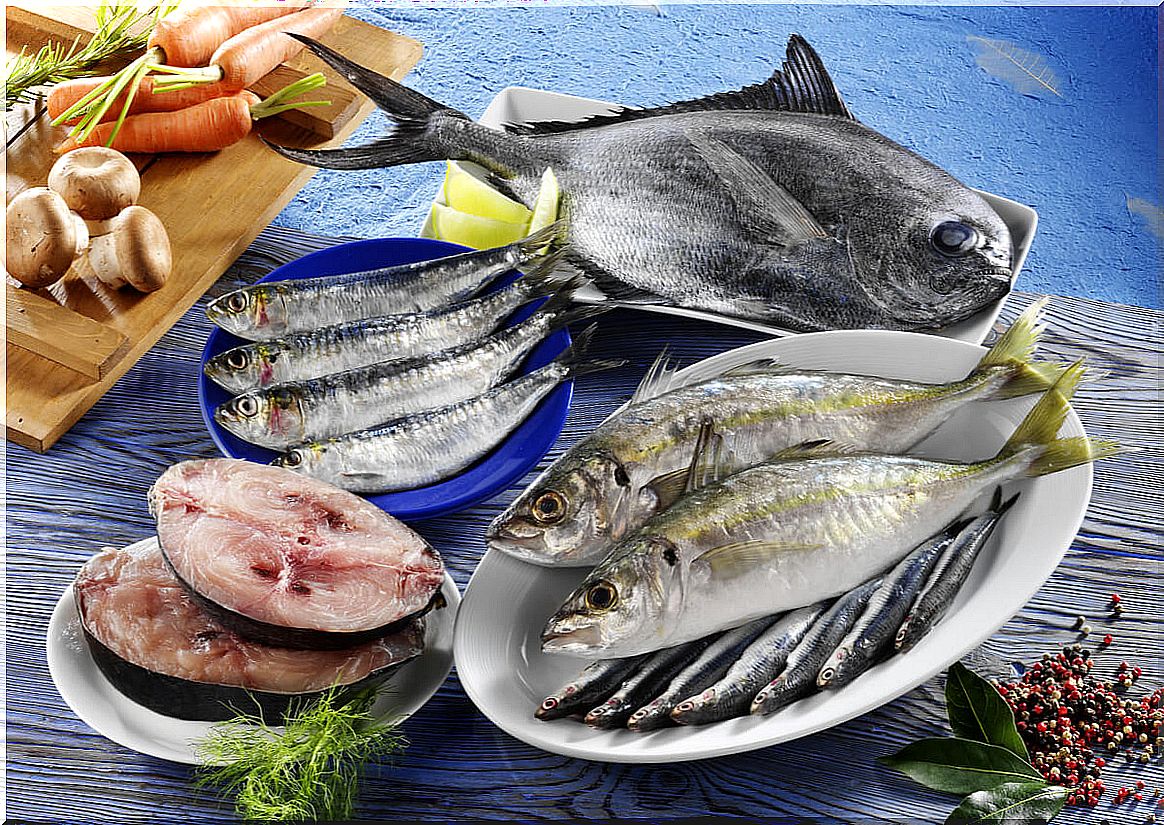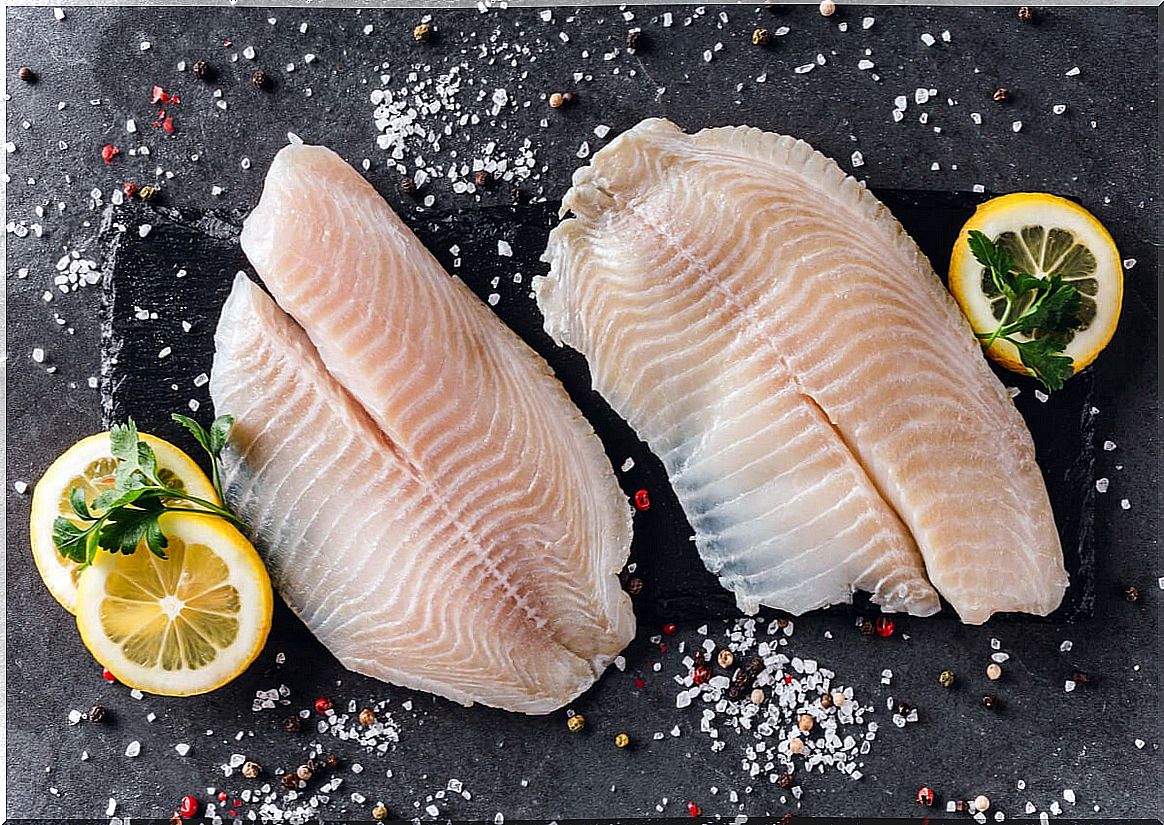Blue Or White Fish: Which Is The Best Option?
Products from the sea are an essential element in the diet. They provide high-quality proteins and other essential nutrients for the functioning of the body. Now, many people have the doubt whether blue fish or white fish is better.
Next we will explain the characteristics of each one to solve any question in this regard. Anyway, before starting it has to be clear what is the main characteristic that differentiates both products.
Fish are classified as white or blue depending on the amount of fat they have. Those with a higher lipid content are known as blue .
Blue Fish
As we have already mentioned, blue fish stands out for its fat content. The lipids inside are unsaturated. These have been shown to be beneficial for the cardiovascular system. They manage to reduce the risk of accidents related to the heart or blood vessels.
In parallel, some of these lipids, such as omega 3s, are capable of regulating the state of inflammation in the body. This is beneficial in order to prevent complex pathologies linked to permanent cell damage. An example of the latter would be metabolic ones, such as diabetes.
Thanks to their proportion of lipids, blue fish have a higher caloric value than white fish. For this reason, the portions that are consumed must be controlled, in order not to unbalance the caloric balance in favor of the intake, which would cause weight gain.
In addition, these foods stand out for their proteins of high biological value, necessary to ensure muscle health, as confirmed by a study published in Nutrients . At the same time, they have minerals such as iodine, necessary to avoid hormonal disorders of the thyroid gland.
In the market it is possible to find different varieties of blue fish. Salmon, sardines, tuna, anchovies and mackerel stand out.

White fish
White fish is leaner than blue fish, that is, it has less fat. In addition, its water content is also higher. However, this does not mean that it is of poorer quality, since it also contains proteins and minerals that are essential to guarantee an adequate state of health.
Being less caloric, it is possible to introduce it with high frequency in the framework of a hypocaloric diet with the aim of reducing body weight. In fact, it is recommended to consume more fish weekly than red meat, understanding this habit as healthy and even capable of reducing the incidence of colorectal cancer.
The white fish that can be found in the market on a regular basis are hake, cockerels, seabass, sea bream and pomfret. All of them can be cooked both on the grill and in the oven, taking advantage of their nutrients and obtaining preparations with great palatability.
Main differences
Next, we are going to explain what are the most notable differences between both types of seafood.
Grease
As we have mentioned, fat is the great differentiator. Blue fish contain it in a higher proportion, omega 3 being the main fatty acids in this type of food.
Nutrients in blue and white fish
There is another important nutritional distinction between white and blue fish, which is the content of vitamin D. This substance accumulates in fat and is therefore found in varieties of blue fish, being lacking in whites.
This nutrient is characterized by being essential for bone health. Keeping it at the recommended levels reduces the risk of developing osteoporosis, as stated in a study published in the Annual review of medicine.
It should be noted that vitamin D can be obtained in two ways: through diet or through sun exposure. However, food is not the most efficient means of ensuring adequate levels of the substance in the body.
Therefore, it is advisable to expose yourself to the sun on a regular basis, although taking the appropriate protection measures. In the event that this is not possible, it is necessary to increase the consumption of oily fish, eggs and enriched dairy products.

So: which is the best choice between blue and white fish?
In reality, there is no one type of fish that is clearly better than the other. The ideal is to alternate them throughout the week to guarantee a varied diet, this being one of the keys to health.
In any case, we can offer you a series of recommendations to ensure adequate and responsible consumption:
- It is beneficial to consume oily fish at least 2 times a week.
- Do not always resort to large ones, as these can contain mercury in their fat. To avoid this risk, choose small fish.
- As much as possible, eat wild versus farmed fish.
- Do not neglect the measures established by food hygiene to destroy the microorganisms found in the product.
Keep in mind that, if your goal is to lose weight, it may be appropriate to prioritize white fish over blue, as the latter is more caloric. Similarly, if your goal is to increase muscle mass, eat more fatty fish. Always try to avoid frying them so as not to damage their lipids.
The important thing is to consume fish regularly
Beyond the fact that blue fish is better or worse than white, it should be noted the need to include food from the sea in the diet on a regular basis. The fact that these predominate over red meat is a healthy dietary habit. Accompany them with vegetables to further enhance their benefits.
Remember that fish provide essential nutrients, such as proteins of high biological value or minerals. In the event that the spines are inconvenient, there are options on the market that present backs free of these elements.
Prepare them on the grill and you will see that the whole family accepts them. In any case, avoid serving them with a sauce, as this will greatly increase their caloric intake.








